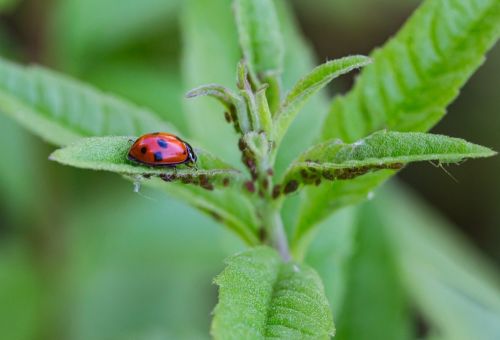How to Get Rid of Most Common Pantry Pests

Discovering pests in your pantry is an experience no homeowner wants to face. These unwelcome visitors, often tiny but formidable, can invade your food storage areas, turning a place of nourishment into a site of distress. More than just a nuisance, pantry pests like weevils, moths, and beetles represent significant health risks by contaminating food items with their eggs, larvae, and waste. This contamination not only spoils the food but can also lead to serious health issues if ingested. Moreover, the presence of these pests often results in substantial food waste, as infested items must be discarded to prevent further spread.
The challenge of dealing with pantry pests is compounded by their diverse nature and the different strategies required to manage them effectively. From the common flour beetle that thrives in your baking supplies to the insidious Indian meal moth lurking among your grains and cereals, each pest brings its unique set of problems and requires specific tactics to combat. This ultimate guide is designed to arm you with the knowledge and tools necessary to identify, eliminate, and prevent these pests from taking over your pantry. By exploring the life cycles, habits, and weaknesses of these pests, this guide offers a comprehensive strategy tailored to keep your pantry clean, healthy, and pest-free. Whether you're facing an existing infestation or looking to prevent future issues, the insights provided here will help you maintain a secure and sanitary storage space for your food, ensuring the well-being of your household.
Understanding Pantry Pests Deeply
The Culprits Behind the Infestation
Beetles and Weevils
Grain Weevils: Specialized in boring into whole grains, their presence signifies a need for immediate action to save your pantry's integrity.
Flour and Rice Weevils: Similar to grain weevils but target flour and rice. Their lifecycle and eradication methods are akin.
Cigarette and Drugstore Beetles: These pests have a penchant for a wide array of dried goods, showcasing the diverse diet of pantry pests.
Moths
Indian Meal Moths and Mediterranean Flour Moths: These species are the flag bearers of pantry moth infestations, often leaving a silk webbing as a tell-tale sign of their presence.
Others
Sawtoothed Grain Beetles and Pantry Mites: These lesser-known invaders are proof of the vast variety of pests that can plague pantries, each with unique characteristics and preferences.
Life Cycle and Behavior
Understanding the life cycle of these pests—from egg to larva to adult—is crucial in targeting and eliminating them at their most vulnerable stages. For instance, Indian Meal Moths can lay hundreds of eggs in their lifetime, emphasizing the need for thoroughness in eradication efforts. Grasping the intricacies of pantry pests' life cycles and behaviors is pivotal in devising effective control strategies. These pests, often microscopic and elusive, undergo a series of transformations from eggs to full-grown adults, each stage presenting unique challenges and opportunities for intervention.

Egg Stage
The beginning of a pantry pest’s life cycle starts with the laying of eggs. These eggs are often so small they go unnoticed by the naked eye and are strategically placed in food sources for easy access upon hatching. For instance, a female Indian Meal Moth is capable of laying up to 400 eggs directly into food products. These eggs are the inception of infestation, making early detection and removal of contaminated food essential to prevent the cycle from progressing.
Larval Stage
Upon hatching, the larvae emerge as the most destructive phase of the pest’s life cycle. In this stage, they are voracious feeders, consuming anything in their path to fuel their rapid growth. This is when the most noticeable signs of infestation become apparent, such as the webbing in flour by flour moths or the tunnels in grains left by weevil larvae. The larval stage is also when pests are most vulnerable to control measures. Physical removal through cleaning and the application of certain treatments can effectively reduce the population and prevent further development.
Pupal Stage
Following the larval stage, pests enter the pupal stage, during which they undergo metamorphosis into their adult form. This transition often occurs in secluded spots away from the initial food source, making it a challenging phase to target. However, understanding this behavior can aid in comprehensive cleaning efforts, encouraging thorough inspections of the pantry and surrounding areas to locate and eliminate these hidden threats.
Adult Stage
As adults, these pests are primarily focused on reproduction, starting the cycle anew. While they may cause less direct damage to food products than larvae, their ability to spread and infest new areas makes them equally problematic. Adults are also the most mobile stage, capable of escaping to infest other areas of the home. At this stage, traps and pheromones can be particularly effective in monitoring and reducing pest populations, preventing the laying of new eggs.
Behavioral Insights
Understanding the behavior of these pests, such as their attraction to light or their preference for certain foods, can enhance control strategies. For example, Indian Meal Moths are drawn to light, making light traps an effective tool for capturing adults. Similarly, the preference of grain weevils for whole kernels over processed grains informs storage and purchasing decisions to reduce risk.
In summary, a deep understanding of the life cycle and behavior of pantry pests provides a strategic advantage in addressing infestations. By targeting specific stages with appropriate measures—from meticulous cleaning to disrupt the larval stage, to trapping adults—households can significantly reduce the impact of these pests and protect their pantry from future invasions.
Step-by-Step Elimination Process
Initial Discovery and Inspection
Upon discovering pests, a meticulous inspection is your first line of defense. Identify the source of the infestation, often found in grains, flours, or even spices, and remove these items from your pantry immediately.
Thorough Cleaning
After disposal, vacuuming every nook and cranny of your pantry is essential to remove any lingering pests or eggs. Follow this with a deep clean using safe, natural cleaners like vinegar or soap water. For added protection, wipe down surfaces with essential oil solutions such as peppermint, known for its pest-repelling properties.
Secure Storage Solutions
Transferring food into secure, airtight containers not only protects against future infestations but also extends the shelf life of your staples. Consider the investment in high-quality containers a pivotal step in your pest control strategy.
Advanced Prevention Techniques
Incorporating Natural Deterrents
Herbs and Spices: Beyond bay leaves, consider incorporating other natural deterrents into your pantry. Cloves, garlic, and even the scent of cedar can repel various pests.

Regular Monitoring
Pantry Audits: Conduct regular audits of your pantry to check for signs of pests. Early detection can prevent widespread infestation.
Use of Traps: Beyond pheromone traps for moths, consider sticky traps or even DIY traps for beetles and weevils.
Humidity and Temperature Control
Maintaining an optimal climate in your pantry through dehumidifiers or even natural solutions like silica packets can create an environment less hospitable to pests.
Long-Term Strategies for a Pest-Free Pantry
Structural Maintenance
Regular maintenance of your home, including sealing cracks and gaps and ensuring window screens are intact, can significantly reduce the chances of pests entering your pantry.
Community and Neighborhood Coordination
Pests do not recognize boundaries. Coordinating with your community or neighbors, especially in shared buildings, can be an effective strategy in widespread pest prevention.
Keeping Up with Trends and New Solutions
Staying informed about new pest control methods, natural deterrents, and storage solutions can provide you with advanced tools and strategies to combat pantry pests effectively.
Leveraging Professional Help
In cases of severe infestation, or when DIY methods fail, seeking professional pest control services can be the most effective solution. Professionals can offer tailored strategies and treatments, ensuring your pantry and home are pest-free.
Conclusion: The Holistic Approach to Managing Pantry Pests
Managing pantry pests is not just about eradication but about adopting a holistic approach that encompasses prevention, maintenance, and vigilance. This guide not only arms you with the knowledge to tackle pantry pests but also emphasizes the importance of ongoing efforts to maintain a clean, healthy, and pest-free pantry. Remember, consistency in prevention and readiness to act upon the first sign of infestation are key to protecting your pantry from these unwelcome invaders. The journey to a pest-free pantry is continuous, weaving together proactive prevention, diligent maintenance, and acute vigilance into a cohesive strategy. Beyond the mere act of eradicating current infestations, it involves embracing a holistic approach that addresses the root causes and potential entry points for these unwelcome guests. This comprehensive guide equips you with the necessary knowledge and tools to tackle pantry pests effectively, but it's the integration of these practices into your daily routine that truly fortifies your pantry against future invasions.
Prevention as a Lifestyle
Prevention goes beyond simple acts of cleanliness; it's a lifestyle choice that prioritizes the health and safety of your home environment. By incorporating regular inspections of grocery items before they enter your pantry, investing in quality storage solutions, and being mindful of the optimal conditions that discourage pest habitation, you're laying a foundation that inherently repels pantry pests. This preemptive mindset is your first line of defense, creating barriers that minimize the risk of infestation.
The Role of Maintenance
Maintenance is the backbone of a pest-free pantry. It's an ongoing commitment to cleanliness and order that detects and addresses vulnerabilities. Regular cleaning schedules, proper food rotation, and immediate action on spills and crumbs deter pests from taking refuge in your pantry. By maintaining a vigilant eye and a clean environment, you significantly reduce the appeal of your pantry to pests looking for their next home.
Vigilance and Adaptation
Vigilance is the ability to notice subtle changes and act swiftly. It's the readiness to adapt your strategies based on seasonal variations, changes in pest behavior, or new insights into pest prevention techniques. This adaptability ensures your approach remains effective against evolving threats, safeguarding your pantry through every change.
Integrating New Solutions and Community Efforts
As new pest control solutions emerge, staying informed and willing to integrate these innovations enhances your defense strategy. Additionally, engaging with your community to share knowledge and strategies can elevate the collective effort to manage pantry pests, benefiting not just your household but those around you.
Embracing a Culture of Care
Ultimately, managing pantry pests transcends mere tactics; it's about embracing a culture of care for your living environment. This holistic approach not only aims to keep your pantry clean and healthy but also reflects a commitment to the well-being of your household. By fostering this environment, you create a space that nurtures rather than harms, ensuring your pantry remains a source of nourishment free from the threat of pests.
In conclusion, the battle against pantry pests is won through a holistic strategy that blends prevention, maintenance, and vigilance into the fabric of your daily life. Armed with the insights provided in this guide, you are now equipped to maintain a clean, healthy, and pest-free pantry, ensuring your home remains a sanctuary against these unwelcome invaders. Remember, the key to success lies in consistent effort and a proactive stance, ready to adapt and respond at the first sign of threat, protecting your pantry and your peace of mind.
Topics
Check more articles on our blog

Ants in the Walls: Identifying, Preventing, and Eliminating Hidden Ant Infestations

A Guide to Identifying and Managing Common Household Pests

Tips On How To Get Rid Of Cloth Moths In Your Home
